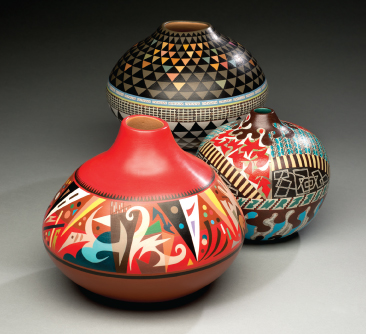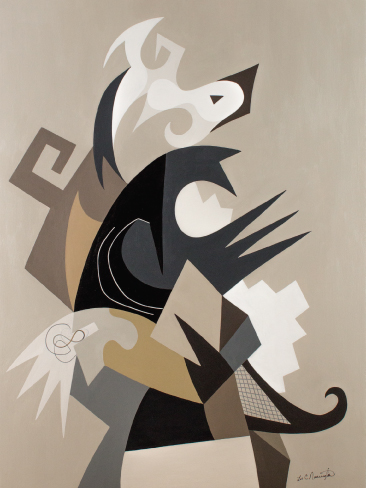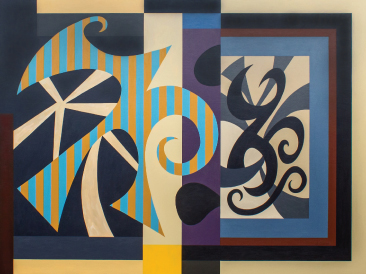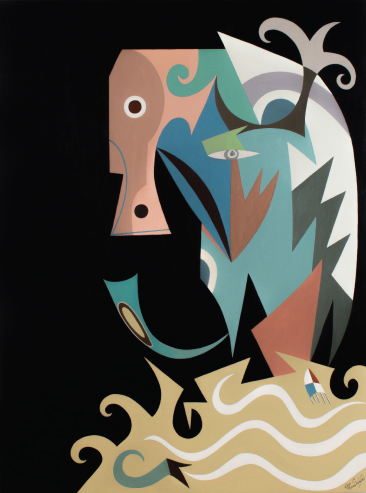
Les Namingha’s debut paintings expose a natural yet transformative evolution for the artist and firmly establish him at the crux of Native painting and American Modernism. New Mexico’s own art historical legacy is steeped in abstraction, garnered by Taos’s early adopters in the 1940s. Namingha thus carries the torch instinctively. His meticulously crisp, clean lines and tight compositions so notable in his Hopi/Zuni pottery effortlessly translate to painting, as he owns his cultural heritage in more ways than one.

Each pot or painting is a novelty as each surface presents an opportunity for traditional designs with seemingly quirky interferences. His circumferences may get a lateral band or less predictably striped, dotted, or subdivided while his paintings undertake the flat picture plane. Namingha’s abstractions and Native iconography are then expertly painted in colorful acrylics. A pot like “After Stuart Davis” takes advantage of the primary colors and lyrical compositions so often found in its namesake’s work, and likewise resonates with the other great American heritage, jazz. This piece more than any other feels like a painting wrapped neatly around a cylinder.

The addictive Gene Davis stripes in the acrylic on panel “Kiva Painting” vibrate blue and orange within their eccentric star shape. Sitkyaki spikes intermingle and weave between neatly sectioned off Mondrian planes of blue, black, and orange. Namingha brings depth to the two dimensional panel, using color block painting in unforeseen ways. His Native imagery merges with the established lexicon of Stuart Davis, James Dougherty, and even Jorge Fick. Namingha’s two-dimensional paintings stage dynamic amalgamations that open up his abstractions to a world notably influenced by his American Modernist predecessors.

His painting titled, “Crag” pieces indigenous symbols and shapes into a puzzling figure, whose spikey hands protrude asymmetrically from either side and neck kinks with a single triangular eye that surprisingly invokes Picasso. Muted earth tones pile from the bottom up like slabs of clay. There’s a bird, a claw, waves, kiva steps, a rock’s edge (as the title suggests), or perhaps a metaphoric fragmentation of histories. “Crag” deconstructs as much as it recreates, and in so doing, presents an engaging future of multiple homegrown movements.




